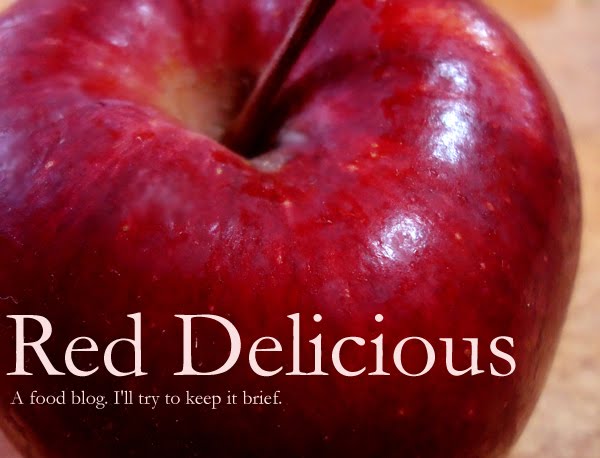So what, you may ask, do I do? Well, if the title of this post hasn't already given it away, here's the answer: I use my slow-cooker! It doesn't generate much heat and can roast an inexpensive, less-tender cut of meat to perfection, all while I'm doing other more important things. Like getting a mani/pedi. Or, like, working... or whatever.
One of my favourites is pulled pork. And come on - summertime is the perfect time for pulled pork on a bun, right? I know some people may cringe at the idea of cooking a pork shoulder in a slow-cooker when you could slow-roast it over a fire, but generally, on a weekday, I don't have time for all that nonsense. With the slow-cooker, I can quickly rub it before work (no, not that, you dirty thing!) and throw it in the crockpot and by the time I get home, it's ready to be pulled and sauced.
OK, so I make a quick rub out of the following: two spoonfuls each of sweet paprika, smoked paprika, garlic and onion powder, 1 spoonful each of dried Greek oregano and sea salt and 1 tsp of cayenne powder.
Then take a skinless, bone-in pork shoulder roast (I either look for a skinless one or I trim the skin off, myself. It won't get crispy in the crockpot, so why bother?) and I rub it with a tiny bit of olive oil, then with the spice rub. Pour about 1/3 cup water in the bottom of your slow-cooker, then plop in the pork roast. Cover and cook on LOW for 8 - 10 hours or until fall-off-the-bone tender.
When it's nice and tender and yields easily to a fork, remove from the cooker, and shred the meat. I use two forks, since it's a bit too hot to do with your hands, at this point. If you come across any huge glops of fat, remove them - they won't have a nice mouth-feel. Plus, the fat has done its job, at this point. It has given its life to keep this roast nice and succulent. It can now be dismissed from class. You can skim the fat from the juices left in the slow-cooker, or you can leave them where they are. Up to you. I won't judge.
Return the shredded pork to the juices in the slow-cooker with some barbecue sauce (preferably home-made – remind me to post about that in the near future) and a touch of water, if necessary, to make a nice saucy mixture. Cover and cook on HIGH for about 20 minutes, just to warm it through and allow the flavours to meld.
Now that, right there, is some yummy pork. That alone is worth trying.
But! It's smart to also pull some of the pork and set it aside before making it all barbecue-ey so you can use it in other non-barbecue-flavoured recipes. Like my easy pork sugo (basically, a pork ragout):
In a saucepan, sauté 10 thinly sliced cloves of garlic in olive oil or butter (or a mixture of the two) until softened, but not browned. Season with salt and pepper. Add 1 small can of tomato paste and sauté until the tomato paste begins to stick slightly to the bottom of the pan and become brown. This will dramatically sweeten the tomato paste and take away any overly acidic or acrid notes.
Deglaze with 2 oz of white wine (optional). Add 1 can (28 oz) tomatoes, with their juice, 1/2 tsp ground fennel seed, a pinch of cinnamon and 2 cups or so of leftover shredded pork. Bring to a gentle boil. Reduce heat and simmer for 35 to 40 minutes or until thick and heavenly-smelling. Season again, to taste. Toss with some hot, freshly-cooked al dente pasta and generously grate some pecorino romano over the top.
 |
| *HUGE SIGH* |




